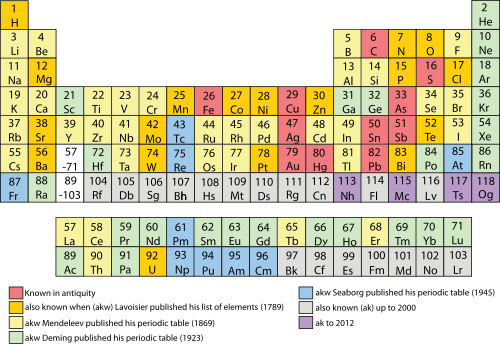Energy Matters - PatternAgents/Electronics_One_Workshop GitHub Wiki
The Atom
The basic building block of all matter is the Atom, which is composed (primarily) of Electrons, Neutrons, and Protons.
We won't get into the whole duality of matter and energy thing right now, as it isn't central to understanding the basics of electronics, and electron movement. But it becomes important later in the study of light energy and optics.
Energy Shells
The concept of energy shells in the atom is important to understanding how different elements behave. Electrons orbit around the nucleus in "shells" or layers that correspond to different energy levels.

Photons and Phonons
A discrete quantity of heat energy is called a Phonon, and a discrete quantity of light energy is called a Photon. Whenever a Phonon or Photon is absorbed by an Atom, an electron can move to an outer shell, and whenever an electron drops from an outer shell to an inner shell it can release a Phonon or Photon.

When Electrons move between shells they absorb or release energy
Valence
The outermost shell is called the Valence Shell, and the number of electrons in the outer shell less than the permitted number is referred to as the Valence of the atom.
Periodic Table
Elements in the Periodic Table are organized in groups according to their Valence, that is to say, group four (IV) Elements have four(4) Valence electrons. You will see that good conductors, like copper, silver, and gold are in the same Valence group.

Ionization
When the number of electrons(-) and protons(+) are the same, they cancel out, and the overall charge of the atom is neutral (zero). However, if electrons(-) are driven off (by the addition of energy), then the protons(+) outnumber the electrons(-), and the atom is considered to be a positive Ion. When an atom accepts extra electrons(-), then the electrons(-) outnumber the protons(+), and the atom is considered a negative ion.
The Law of Charges
Once materials are either positively or negatively Ionized, their Electrostatic Fields can interact with each other.
So, you likely remember these basic rules from school:
-
Like Charges repel each other
-
Unlike Charges attract each other (opposites attract)
You'll understand this a bit better after we discuss Electricity and Magnetism later on.
Counting Charge
The amount of charge transferred between individual atoms is too small a number to work with, so we use a unit of measure known as the Coulomb, which is 6.24 x 10(18th) electrons, by the way. If you hear of someone Energy Harvesting very small amounts of energy (i.e. from vibration, walking, etc.) they might refer to Coulomb Counting such small amounts of energy.
Covalent Bonding
A Covalent Bond is a chemical bond that involves the sharing of electron pairs between atoms. For many molecules, the sharing of electrons allows each atom to attain the equivalent of a full outer shell, corresponding to a stable electronic configuration. The reason this is important to electronics, is that it relates to the structure formed by the atoms that are Covalently Bonded together. This is the reason that many materials for electronics are internally shaped in the form of a Crystal Lattice Structure. This will become important later on, as we talk about how semiconductors and chips are made.
Next ->

==================================
